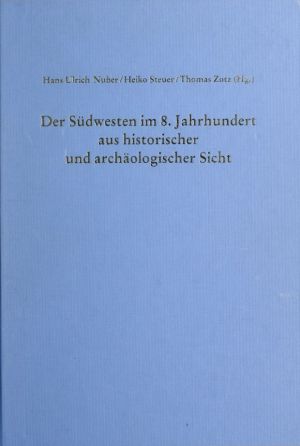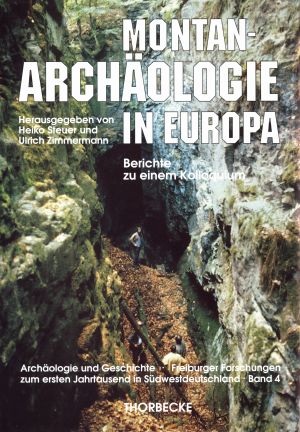Kempa, Martin
Der Südwesten im 8. Jahrhundert aus historischer und archäologischer Sicht
On October 28 and 29, 1994, the Freiburg Research Network "Archaeology and History of the First Millennium in Southwest Germany" organized a colloquium at the University of Freiburg with the topic "The Southwest in the 8th Century from a Historical and Archaeological Perspective".
During the colloquium in 1994 such a period of upheaval was to be looked at more closely with the 8th century. This period, which cannot be strictly defined as a century, shows its transitional character in various respects, e.g. in political history with the striking end of the Alemannic duchy in the middle of the century and the integration of Alemannia into the Frankish Empire, in settlement archaeology with the flowing end of the row grave custom, the typical burial custom in the Merovingian Empire, and thus of the so-called row grave civilization. It was the intention of the colloquium to work out selective and long-term changes of this kind in the concentration on a region characterized by manifold historical traditions (Celts, Romans, Alemanni) as well as in the specific comparison with other historical landscapes and to approach the topic both in a general overview and in individual case studies.
Montanarchäologie in Europa: Berichte zum Internationalen Kolloquium »Frühe Erzgewinnung und Verhüttung in Europa« in Freiburg im Breisgau vom 4. bis 7. Oktober 1990
Based on the papers presented at an international and interdisciplinary symposium (October 1990) in Freiburg/Br., this volume offers an overview of the latest montanarchaeological investigations in almost all of Europe. The more than 40 contributions span the time from prehistoric to early modern mining. The mining of gold and silver, of non-ferrous metals as well as of iron is taken into account, whereby the path from ore mining via smelting to the further processing of the raw metals is shown and keywords such as working conditions and environmental influences indicate the thematic diversity of the volume. The book, which is equipped with an extensive index of locations and more than 300 illustrations, vividly illustrates the research approaches, methods and previous results of mining archaeology.








